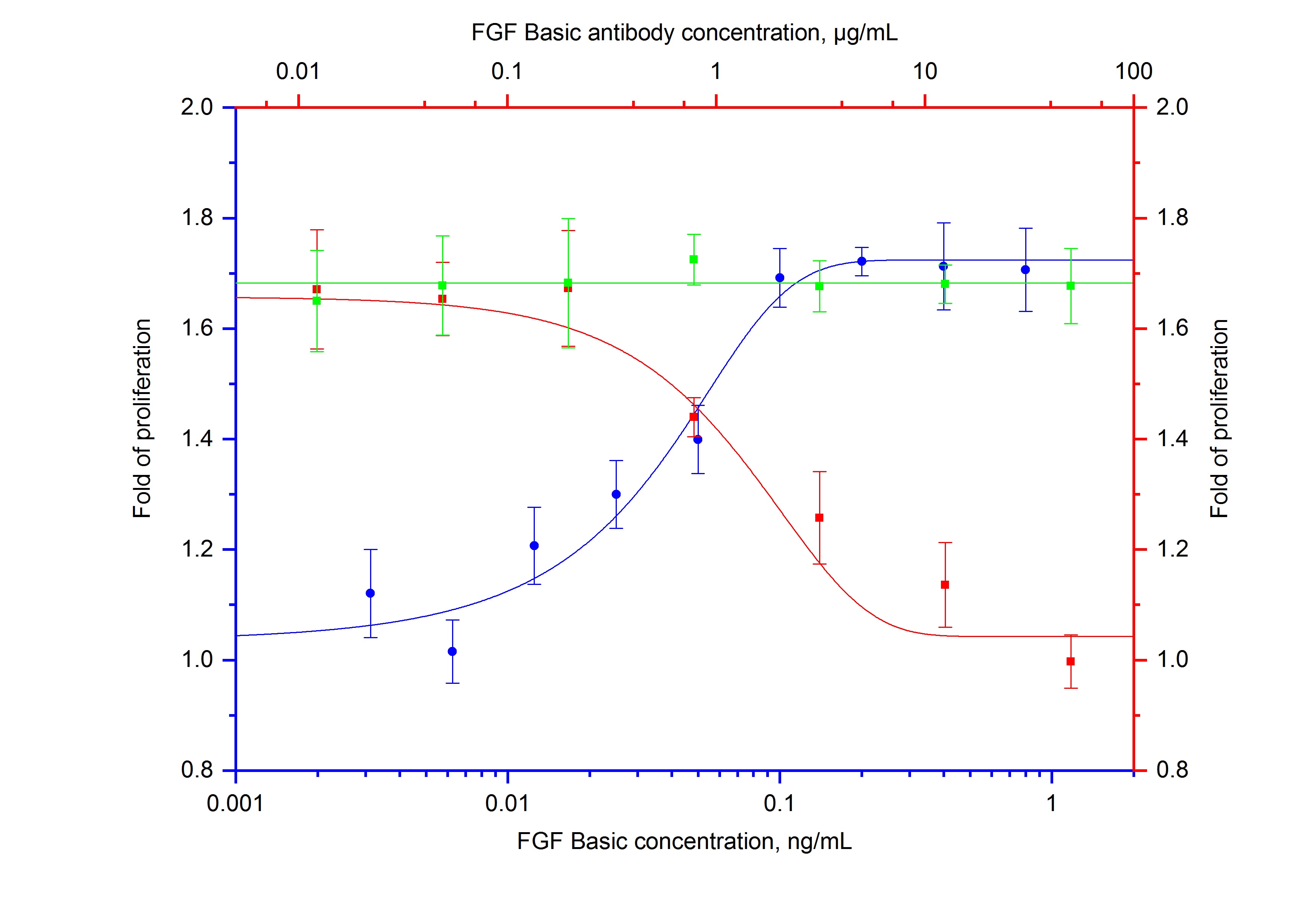| Neutralization |
Product Information
69024-1-Ig targets NeutraKine®FGF basic in ELISA, Neutralization, Cell treatment applications and shows reactivity with Human samples.
| Tested Reactivity | Human |
| Cited Reactivity | human |
| Host / Isotype | Mouse / IgG1 |
| Class | Monoclonal |
| Type | Antibody |
| Immunogen | human HumankineFGF basic protein HZ-1285 Predict reactive species |
| Full Name | fibroblast growth factor 2 (basic) |
| Gene Symbol | FGF2 |
| Gene ID (NCBI) | 2247 |
| RRID | AB_2918844 |
| Conjugate | Unconjugated |
| Form | Lyophilized Powder |
| Purification Method | Protein G purification |
| Storage Buffer | Sterile PBS , pH 7.4 |
| Endotoxin | <0.1 EU/μg |
| Reconstitution | This product was lyophilized from a 0.2 μm filtered solution in PBS. Reconstitute at 1.0 mg/mL in sterile H2O before use. |
| Stability and Storage | Lyophilized antibodies are stable for 1 year from the date of receipt if stored between (-20°C) and (-80°C). Upon reconstitution we recommend that the solution can be stored at (4°C) for short term or at (-20°C) to (-80°C) for long term. Repeated freeze thaw cycles should be avoided with reconstituted products. |
Background Information
Fibroblast growth factor-2 (FGF-2), also referred to as basic FGF, belongs to a family of growth factors that stimulate proliferation of cells of mesenchymal, epithelial and neuroectodermal origin. The mRNA for this gene contains multiple polyadenylation sites, and is alternatively translated from non-AUG (CUG) and AUG initiation codons, resulting in at least five different isoforms with distinct properties.
This antibody is used to neutralize the bioactivity of FGFbasic-TS.
Publications
| Species | Application | Title |
|---|---|---|
Int Immunopharmacol Cancer-associated fibroblasts promote gastric cancer cell proliferation by paracrine FGF2-driven ribosome biogenesis |



